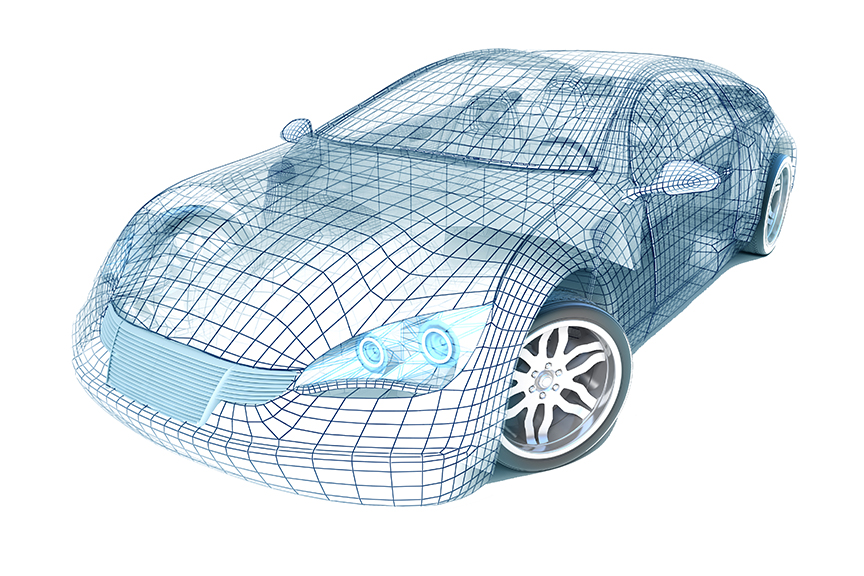6/12/2015
If you’ve ever taken a physics class or rearranged your furniture, you know the heavier an object is, the more energy it requires to move it. The same principle applies to automobiles and other types of transportation. This is great news for consumers! This means the lighter a vehicle, the less energy it takes to accelerate, and the better its fuel economy will ultimately be.
 Major Changes on the Horizon
Lightweight vehicles. Lower MPG. Aggressive EPA and CAFÉ standards.
Major Changes on the Horizon
Lightweight vehicles. Lower MPG. Aggressive EPA and CAFÉ standards. These major changes are on the horizon for how cars and vehicles, in general, will be produced, ultimately impacting the manufacturing community at all levels of the supply chain. With change comes questions:
- How will these trends affect small and medium-sized manufacturers?
- Will steel remain the primary material used to create cars and trucks?
- Will all vehicles now have electric engines?
- Is there an opportunity for the lower tier manufacturer?
- Could this shift drive a segment of manufacturers out of business in the next 10 years?
Thinking Ahead
Although manufacturers everywhere should be thinking about how the incorporation of lightweight materials impacts them, this often isn’t the case. Unlike Tier One suppliers, Tier Two and down don’t have teams of engineers and planners plotting future strategies. The smaller, privately owned manufacturers are focusing on TODAY by filling orders, quoting new business, and satisfying customer needs, finding it difficult to look more than one or two years ahead.
Know the Facts, See the Potential
According to the U.S. Energy Department:
- Reducing a vehicle's weight by 10% can improve the fuel economy of the vehicle by 6 to 8%.
- Magnesium and carbon fiber have the potential to reduce the weight of some vehicle components by 75%.
- If just one quarter of the light-duty vehicles in the U.S. used lightweight components and high-efficiency engines, we could save more than 5 billion gallons of fuel annually by 2030.
A Meeting of the Minds
In May, Michigan Manufacturing Technology Center (MMTC) hosted a Lightweight Materials seminar for industry experts to discuss advances in materials and lightweight challenges facing the automotive sector. Speakers from Dow Chemical, Dow Corning, Nexteer Automotive and Ducker Worldwide, presented an optimistic, yet potentially daunting, look at the next 10 years. Here is what was projected:
- Steel isn’t going away, but aluminum and advanced high strength steels will gain significant share of the automotive market. Ducker Worldwide estimates net aluminum share of the curb weight of American autos will go from 11% to 16% between now and 2025. At the same time, overall steel will drop from 52% today to 46% in 2025, although use of advanced high strength steel will increase from 5% to 11%.
- Internal combustion engines will remain, but will go to smaller displacements and fewer cylinders. Turbo and supercharger shares will increase from 24% today to 42% in 2020 versus naturally aspirated engines.
- Better batteries and the Tesla commitment to e-vehicle production suggest that electric car production will grow at a tremendous rate. It is estimated electrics may go from 0.2% of total new car purchases to 1 – 2% by 2025. This is major growth, but not a huge loss to the internal combustion engine.
- Hybrids and start stop engines will take a much larger share growing from 11% of production today to 55% in 2020.
- Plastics and composites will also increase. As a percentage of curb weight today, they are 23% and in 2025 they will grow to 25%. Projected costs of carbon fiber composites are still too high to be considered for high volume vehicle production, but in applications like heavy trucks, expect to see continuous growth in the use of both carbon and glass fiber composites.
- In order to meet the 2025 mpg CAFÉ goal of 54.5 mpg, estimates call for the average curb weight to be reduced from 3800 lbs. to 3400 lbs. for all passenger vehicles.
- By incorporating all aluminum exterior panels or body in white, the 2015 Ford F150 is 700 lbs. lighter than the 2014 version. Other vehicles across all lines will need to make similar changes. Ducker Worldwide identifies the hood panels as becoming nearly all aluminum by 2020 with 25% to 60% of other panels going aluminum.
Manufacturers are faced with profound changes in materials and the processes to convert them into finished components. MMTC, through its Materials expertise, will be working with client companies to help them find the best opportunities and new products to take advantage of the changes in transportation industry materials.
Since 1991, MMTC has assisted Michigan’s small and medium-sized businesses compete and grow. Through personalized services fitted to meet the needs of clients, we develop more effective business leaders, drive product and process innovation, promote company-wide operational excellence and foster creative strategies for business growth and greater profitability. Find us at www.mmtc.org.
Categories: Lightweighting